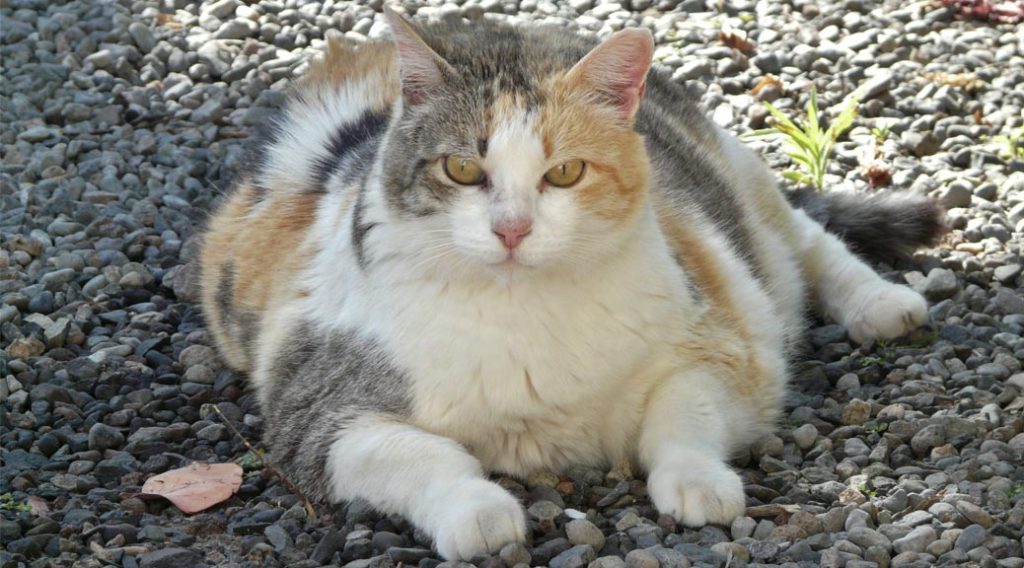The most common New Year’s resolution for humans is to lose weight. With an estimated 58% of cats and 54% of dogs in the United States overweight or obese, according to the Association for Pet Obesity Prevention, the coming new year could be a great time to resolve to help your pet lose weight.
Why does it matter? As with humans, overweight and obese pets run a greater risk of developing a number of medical problems, including:
- Osteoarthritis
- Insulin resistance and type 2 diabetes
- High blood pressure
- Heart and respiratory disease
- Cranial cruciate ligament injury
- Kidney disease
- Many forms of cancer
- Decreased life expectancy (up to 2.5 years)
We’re Here to Help!
Before you begin a weight loss program for your pet—particularly if the problem is severe and/or the pet is older or has other health issues—we strongly encourage you to visit our office for a physical exam and consultation with one of our doctors to develop a safe, effective, individualized weight loss plan.
Our first step is to determine if your pet actually is overweight and to set an ideal, healthier weight for your dog or cat.
We’ll talk about what you’re feeding your pet—including treats and table scraps—and calculate how many calories your pet should be consuming each day. Then we do the math to translate calorie requirements into the amount of food you should be feeding each day to achieve a healthier weight at a safe, comfortable pace. And we do include treats in our calculations!
We also discuss opportunities for increasing your pet’s physical activity, taking into consideration your pet’s age, general health and present fitness level as well as your lifestyle, interests and ability to exercise alongside your pet. If you’re able-bodied and interested in getting more exercise yourself, we might recommend a gradually increasing regimen of walking or jogging with your pet. If you are not interested in or able to exercise yourself, we may suggest teaching your dog to play fetch or encouraging your cat to chase a laser (if your cat doesn’t find lasers too frustrating) or a string toy (under human supervision only).
Another option for increasing activity levels for cats is to use a puzzle feeder, which is a food-dispensing toy you can buy or make for your cat. We found a great blog post on puzzle feeders that includes instructions on how to make your own.
With the nutrition needs calculated and the plan for increasing activity levels mapped out, we will most likely send you and your pet home to implement our recommendations. We will schedule an appointment for a recheck to determine how well the weight loss plan is working for your pet.
Happily, for many otherwise healthy pets whose owners stick with our plans, these weight loss recommendations work! As the dog or cat approaches the target healthy weight, we adjust the nutrition and exercise program to maintain success over the long term.
If, at the first follow-up appointment, we find the pet is having difficulty losing weight despite good compliance with the feeding and exercise program, we may test thyroid function—particularly in older animals—to rule out hypothyroidism, which makes weight loss difficult.
Our veterinarians may also recommend a prescription food to promote weight loss, such as Hill’s Prescription Diet Metabolic Advanced Weight Solution—more commonly known as Hill’s Metabolic Diet.
We have recently been trying this food with a number of our overweight patients, and the results have been promising. Before releasing this food several years ago, Hill’s conducted in-home trials with 314 pets. 96% of dogs and 81% of cats lost weight in just two months.
This innovative nutrition formula from Hill’s helps pets lose weight by boosting their metabolic rate, regulating appetite and reprogramming the genes that control metabolism so they behave more like those of lean animals.
For more details about how this product works, we recommend this article on the PetMD web site. And here’s a blog post about Hill’s Metabolic Diet by a veterinarian at mypetsdoctor.com.
Hill’s Metabolic Diet is available at Brownsburg Animal Clinic by prescription in dry and canned form and as treats. To use this food to treat overweight or obesity, our registered veterinary technicians take initial measurements and continue treatment with required monthly monitoring.
Resolved?
Ready to make that resolution to help your pet slim down? Call us during office hours to schedule your exam and weight loss consultation for the new year!

